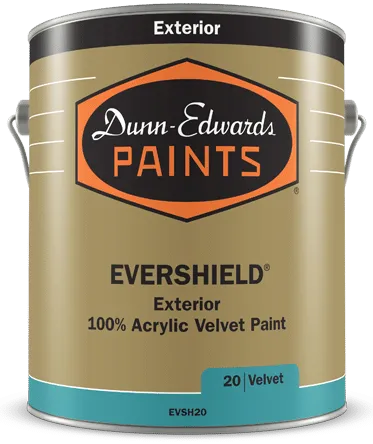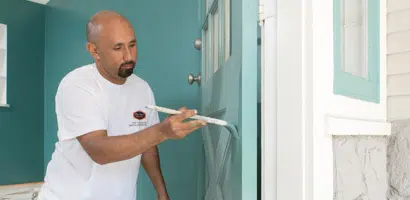The Importance of Primer & Finish Systems
02/12/2018 | Dunn Edwards |

Think Priming Isn’t Important? Think again.
In recent years, a growing number of paint manufacturers have been touting the merits of “self-priming” paint in order to cut costs and shorten painting time. But, what exactly does that mean? Will skipping this important step — as well as not finishing with a quality topcoat — result in a beautiful paint job? Hardly. In reality, for professional results, prime first. Here’s why:
Beyond the fact that it has always been a best practice to prime surfaces before picking up the brush, priming is vital for sealing stains; producing a more even, level finish; and creating greater adhesion between the surface and the top coat. Priming is particularly recommended when painting lighter color atop a dark surface, as it ensures that the deep color doesn’t show through the more transparent hue.
There is a wide range of primers that are appropriate for particular surfaces — including drywall, metal and concrete — or that address a specific problem such as covering stains or preventing tannin bleeding and mildew. New drywall, which is exceptionally porous, will simply absorb paint like a sponge. Primer prevents this problem by filling in the pores and effectively reducing the number of coats required. Another substrate that benefits greatly from priming is metal fencing, as using metal-specific primer shields the surface against rust, as well as provides as a solid foundation for future coatings.
When it comes to self-priming, it’s important to note that competitors offer no priming properties such as stain-blocking. And, when painting exteriors, not using quality primer can result in a range of issues, including cracking, flaking, peeling, blistering, mildew, stain bleed-through, chalking and fading — none of which you (or your client) want. Testing done by the Paint Quality Institute, an independent industry research group, demonstrated that just one layer of topcoat atop a well-primed surface performs better than two coats of topcoat applied directly to wood.
Here are some best practices to help you achieve a superior paint job:
- Use a metal putty knife to scrape away cracked/peeling paint, as well as any bumps such as those left when a nail is removed
- Fill gouges and gaps with drywall compound or spackle. Be sure to let it to dry completely before sanding
- Clean surfaces with a scrub sponge and a diluted mix of a non-foaming cleaner (a detergent that creates suds makes the wall too slippery to hold paint). The sponge will clean, sand down and roughen the surface for better adhesion
- Apply two coats for the best results. Some paint companies claim that coverage can happen with just a single coat but the truth is that a quality paint job needs two coats for enhanced durability and coverage
- Always use a primer and topcoat, no matter what anyone tells you
Remember that proper priming and finishing are often overlooked, resulting in higher costs and time lost by having to fix failures and repaint. Take the time to choose and use the right type of primer to ensure your next painting project is beautiful and long-lasting.















